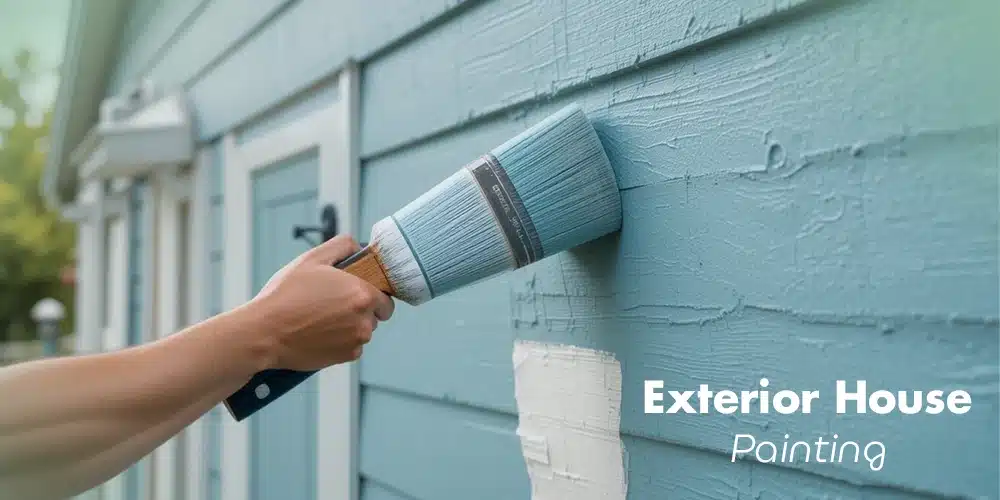When it comes to painting projects, one common question that arises is whether it’s acceptable to use exterior paint indoors. The answer isn’t as straightforward as a simple yes or no; there are several factors to consider. Let’s delve into the pros and cons of using exterior paint inside your home.
Pros of Using Exterior Paint Inside
- Durability: Exterior paints are formulated to withstand harsh outdoor conditions like sunlight, rain, and temperature fluctuations. As a result, they tend to be more durable than interior paints, making them suitable for high-traffic areas indoors.
- Mold and Mildew Resistance: Many exterior paints contain additives that inhibit the growth of mold and mildew, making them ideal for damp or humid indoor spaces such as bathrooms and basements.
- UV Protection: Some exterior paints offer UV protection, which can be beneficial if you have large windows or areas exposed to direct sunlight indoors.
- Color Retention: Exterior paints are designed to retain their color over time, resisting fading and discoloration. This can be advantageous in rooms with significant natural light exposure.
Cons of Using Exterior Paint Inside
- Release of VOCs: Exterior paints typically contain higher levels of volatile organic compounds (VOCs) than interior paints, which can lead to stronger odors and off-gassing indoors. This can be a concern, especially in poorly ventilated areas or for individuals with respiratory issues.
- Application Challenges: Exterior paints may have a thicker consistency and different application requirements compared to interior paints. Achieving a smooth finish indoors may require additional effort and expertise.Please take a moment to read this: Essential Tips For Mastering Interior Paint.
- Limited Color Options: While exterior paint manufacturers offer a wide range of colors, some hues may not be available in exterior formulations. This limitation could restrict your interior design choices.
- Cost: Exterior paints tend to be more expensive than their interior counterparts due to their specialized formulations and added features like UV resistance and mold protection.
Regulatory Measures to Control VOC Content in Paints and Coatings
Many countries and regions have implemented regulations to control the volatile organic compound (VOC) content in paints and coatings, aiming to minimize air pollution and safeguard public health. These regulations typically set limits on the allowable levels of VOCs in paint formulations, both for interior and exterior use. By enforcing these restrictions, authorities seek to reduce emissions of harmful chemicals into the atmosphere and mitigate the adverse effects on air quality.
Types of Regulations:
- Limits on VOC Content: Regulatory agencies establish maximum VOC content levels that paints and coatings must meet to comply with environmental standards. These limits vary depending on the type of product and its intended use. For instance, there may be separate limits for interior and exterior paints, primers, and specialty coatings.
- Labeling Requirements: Regulations often mandate labeling requirements to inform consumers about the VOC content of paint products. Paint containers must display information regarding VOC levels, enabling consumers to make informed choices and select products that align with their environmental preferences. Here you must read: Weather’s Effects On Exterior Paint.
Sustainable Alternatives
To mitigate the environmental impact of using exterior paint indoors, consider exploring sustainable alternatives with lower VOC emissions and reduced environmental footprint. Look for paints labeled as low-VOC or zero-VOC, which contain fewer harmful chemicals and emit fewer pollutants into the air. Additionally, opt for paints that have eco-friendly certifications, such as those from third-party organizations like Green Seal or the Master Painters Institute.
Conclusion
While it’s technically possible to use exterior paint indoors, it’s essential to weigh the pros and cons carefully before making a decision. In some situations, such as high-traffic areas or spaces prone to moisture, exterior paint may offer superior performance and longevity. However, the potential drawbacks, such as odor, limited color options, and application challenges, should also be taken into consideration. By choosing low-VOC or zero-VOC paints and implementing proper ventilation measures during painting, homeowners can minimize the environmental impact and promote healthier indoor air quality. Additionally, supporting sustainable paint practices and regulations can contribute to a more environmentally responsible approach to painting projects.
FAQs
Should I expect any differences in appearance or texture when using exterior paint indoors?
Exterior paint may have a slightly different appearance or texture when applied indoors compared to exterior surfaces. However, with proper application techniques and quality paint products, the differences are often minimal and may not be noticeable.
Can I mix exterior paint with interior paint for indoor projects?
While it’s possible to mix exterior and interior paint, it’s generally not recommended due to differences in formulations and performance characteristics. It’s best to use paint products specifically designed for their intended use (interior or exterior).
How do I clean and maintain surfaces painted with exterior paint indoors?
Surfaces painted with exterior paint indoors can be cleaned and maintained similarly to those painted with interior paint. Regular dusting and occasional cleaning with mild soap and water can help preserve the paint’s appearance and longevity.
Are there any special considerations for painting interior surfaces with exterior paint in high-moisture areas like bathrooms or kitchens?
In high-moisture areas, such as bathrooms and kitchens, it’s essential to choose exterior paints with mold and mildew-resistant properties. Proper ventilation and surface preparation are also crucial to prevent moisture-related issues.
Will using exterior paint indoors affect the indoor temperature or humidity levels?
While exterior paint is not specifically designed to regulate indoor temperature or humidity, it can provide a protective barrier against moisture infiltration, which may indirectly impact indoor comfort levels. However, the effect may vary depending on factors such as climate and building construction.



